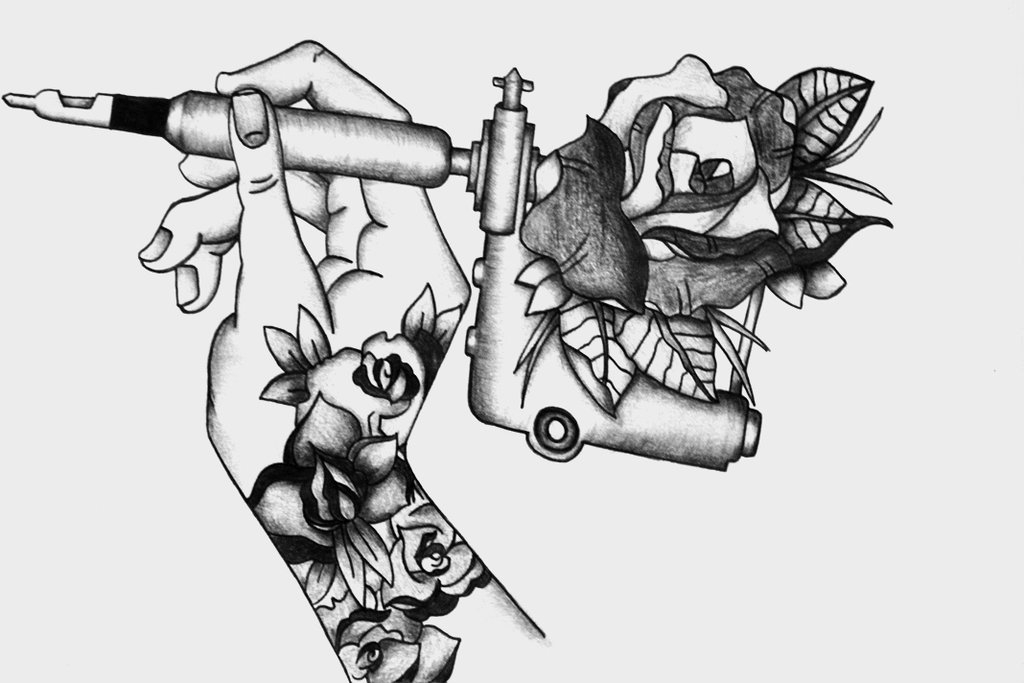In this article, I’ll show you how to set up a tattoo gun for lining and lightening the skin. You’ll also learn how to fill the tip reservoir and check each needle. After setting up your tattoo gun, it’s time to lighten your skin. The next step is to apply ink. You can use the following steps to guide your practice. To get started, click here!
Set up a tattoo gun for lining
If you want to learn to line a tattoo, then you must know how to set up a tattoo gun properly. In tattooing, you should never go deeper than one to two millimeters, or about an eighth of an inch, into the skin. You must also ensure that the lining process is done carefully because the lining is the part that makes your tattoo look professional and shiny. In order to achieve this, you should set the voltage of your tattoo gun from 4 to 12 volts.
To set up a tattoo gun, you must first get the proper needle. You must also ensure that the gap between the armature bar and the front spring is at least the thickness of a dime. Then, you need to test the voltage settings and make sure that your machine works correctly. If you cannot tune your machine properly, you should buy a different one. Besides tuning the gun, you must know the basics of tattooing machines.
Fill the tip reservoir
A tattoo gun has several parts, including a needle, bar, and tip reservoir. Tattoo artists should take special care to sterilize all the parts, and should always wear latex gloves while assembling the gun. Tattoo guns should be autoclaved for maximum sterilization. To maintain their sterility, artists should clean the parts with an autoclave or disinfectant. After sterilization, artists should disinfect the needle and tip reservoir before each use.
The interior of the needle tip forms an inner cavity, also known as the ink storage cavity. A smooth internal wall connects the tip opening to the tip reservoir, preventing the sharp end from being bent or resistant to the gun’s ink. Lastly, the tip reservoir provides a safe place for the ink. Keeping the tip reservoir full will ensure that you have an even application every time.
Check every needle
Before you begin, you should always check every needle in the tattoo gun before you start working on a new tattoo design. High-quality needles will fit tightly in the gun, resulting in less rattling and ink splatter. You should also check the tip of every needle before using it, as there may be differences between brands and types. Different brands have different tips, which can vary in thickness and design. Eventually, you will develop a preference for one type over the other.
You should never reuse the needles from previous clients, as this can carry disease. You may also want to use deodorant, which will darken the initial outline, but it’s critical that you transfer this substance with a sterile pad. In any case, you should always use sterile needles to complete a tattoo design. New needles are bright silver and should be free of discolorations or stains.
Lighten up on the skin
To lighten up your tattoo, start by exfoliating the skin first. You can do this with a salt scrub or a combination of sugar and coconut oil. Then, apply hydrogen peroxide with a cotton swab. This solution will lighten darker tattoo colors over time. Use caution when applying hydrogen peroxide, though. If your skin turns pink after applying it, you’re overscrubbing.
Allow the mags to bounce off the skin surface
When using a tattoo gun, you need to consider the speed of your hand and the speed of the tattooing process. While tight stretching can burn the top layer of skin quickly, bouncing off the surface helps keep hard edges to a minimum. A tattoo gun with stippling needles is best for filling and feathering out colors. The steep angles can cause damage to the skin, so make sure to use the correct saturation.
Check the voltage of the tattoo gun
When choosing a tattoo machine, you should always check the voltage of the device. Professional tattooists use machines ranging from 6.0 to 6.8 volts. If you are unsure of the voltage of your machine, you can also check the duty cycle. This is the amount of time the tattoo machine makes contact with the skin, which should be 50%. Tattoo artists often recommend running their machines at a lower voltage to prevent open circuits.
The voltage of a tattoo machine varies depending on the skin texture, size of the piece, and the shading technique used. Your tattoo artist will be able to advise you on what type of tattoo machine is best for you. While many artists use different voltages for lining and shading, it is important to choose a machine that is stable and produces a consistent, quality tattoo. You should also avoid magnums, as they require higher voltage.

